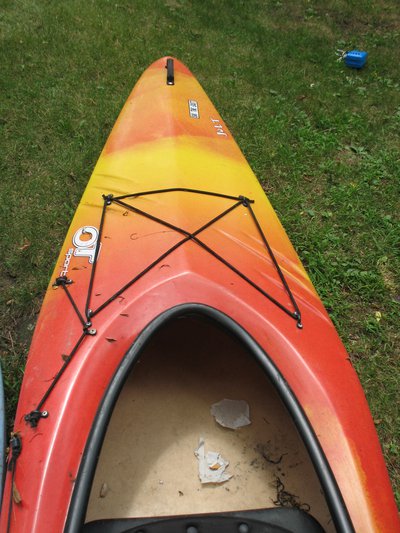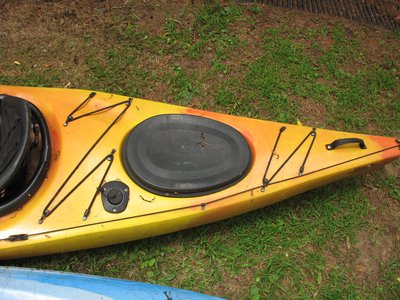I will agree that it is still possible to have fun in a Dick's Sporting Goods kayak. However, very often those who start with cheap crappy gear, regardless of the sport, lose interest. Kayaking really isn't that expensive, even for a decent boat. Think of it like a full skiing setup, without ever having to buy lift tickets. Regarding longer boats, they really are what one wants for any open water on lakes, rivers, etc. Their only downfall is their turning radius. Here is a short article to this point:
The length of a kayak has a tremendous effect on its
tracking, maneuverability, and stability.
Longer kayaks have a number of advantages: they are
usually easier to paddle, more stable with the same
amount of weight, and capable of carrying heavier loads
with less loss of performance. THEY ALSO TRACK
BETTER, MOVE FASTER, AND GLIDE FARTHER WITH
EACH STROKE, ALLOWING GREATER EFFICIENCY
WITH LESS EFFORT. These attributes are especially
important on lakes or other calm water, where hairpin turns
are not involved.
With a shorter kayak, oddly enough, you have to exert
more energy to paddle it forward than with a longer model.
A longer kayak will also negotiate the waves of a river or
wind-tossed lake more smoothly than a short one, which
will torque out with each oncoming wave, requiring you to
fight to keep on course. A longer boat will give you more
stability and a much better ride. A still longer craft will be
completely manageable, rising and falling gently with the
waves.
Shorter kayaks, on the other hand, are less expensive,
lighter in weight, less cumbersome, and easier to transport.
But the most important virtue of a short kayak is quicker
turns. A short hull is also preferable to paddling on narrow
streams.
From http://bobskayaks.net/kayaklength.html


